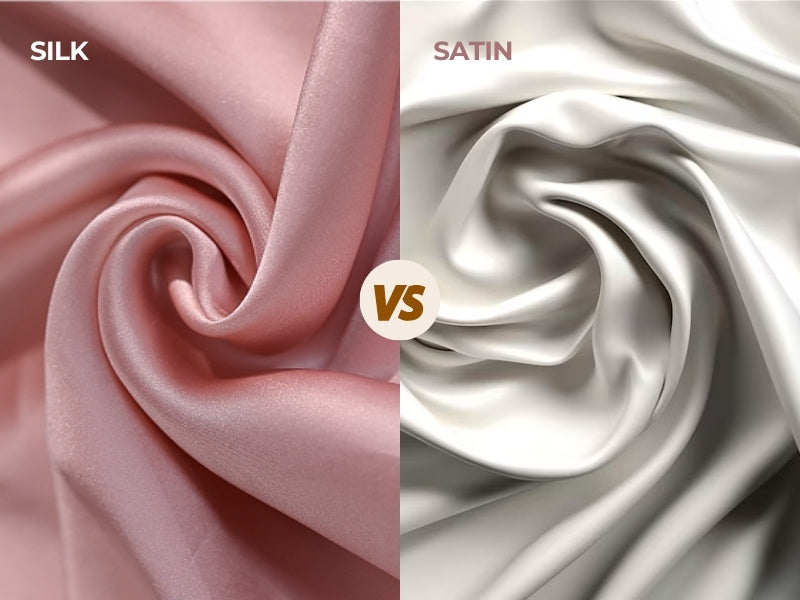The History of Silk
Silk is one of the most delicate fabrics. It is well used in our daily life, commonly in silk bedding and silk sleepwear. Silk's history began in ancient China. According to Chinese legend, Empress Hsi Ling Shih discovered the silk, while sipping tea beneath a mulberry tree. When a cocoon fell into her teacup and began to unravel, she fell in love with the gleaming strands of what became known as mulberry silk.
The cocoon was created by the Bombyx Mori silkworm. This discovery paved the way for the cultivation of silk. The Empress is also credited with inventing the loom for weaving silk.

Silk cloth was once reserved only for royalty
At the beginning of silk history, only the Emperor and those in his family whom he permitted could wear the fabric.
Legend has it that the Emperor wore white silk inside his palace and yellow silk outside. He also permitted his heir and main wife to do the same.
Over time, the coveted textile's use spread throughout Chinese culture, and more people began to wear it. Because of its texture and sheen, Chinese silk exports spread throughout East Asia as fine fabrics.

The Silk Road
For a time, China dominated the silk industry, even experiencing an economic boom from silk exports. However, they were not the only ones capable of producing silk.
Silk cultivation spread as far as Persia in the sixth century and Europe in the 12th. These countries also developed a thriving textile trade. Thousands of silk weavers traveled the Silk Road to Italy during the Second Crusade.
The Silk Road was the name given to the network of trade routes that linked China and Asia to Europe and the Middle East. Trade with the West began in 130 B.C. during the Han Dynasty.
The Silk Road was operational until 1453 A.D., when it was closed down by the Ottoman Empire.
![[Light Blue] SilkSilky Pure Silk Notch Collar Women's Pajamas 001,](http://silksilky.com/cdn/shop/files/ab83afb9301666ee2f174a8ae72ffda4_4e9bb488-7880-40fe-9e69-f0fd823857c5.jpg?v=1764653199&width=1200)
![[Light Blue] SilkSilky Pure Silk Notch Collar Women's Pajamas 002,](http://silksilky.com/cdn/shop/files/db8dbeee5354fe3b631b963715847ffe.jpg?v=1764653202&width=1200)
![[Dark Blue] SilkSilky 19Momme Pure Silk Notch Collar Women's Pajamas 001](http://silksilky.com/cdn/shop/files/a3a1bba736f86048192bee870ad3e638_be7e8977-dfbe-4235-87ac-1471e906d5e9.jpg?v=1763547174&width=1200)
![[Dark Blue] SilkSilky 19Momme Pure Silk Notch Collar Women's Pajamas 002](http://silksilky.com/cdn/shop/files/3a1b158868225840e725562c4d5c7c9c_50e1a43d-6284-4def-9c49-bb64a6300eee.jpg?v=1763547174&width=1200)
![[Pink] SilkSilky Pure Silk Sleep Cap 001](http://silksilky.com/cdn/shop/files/SilkSilky_Pure_Silk_Sleep_Cap_Pink_001_C-250529006.jpg?v=1762221980&width=1200)
![[Pink] SilkSilky Pure Silk Sleep Cap 002](http://silksilky.com/cdn/shop/files/1738767123_1282c43b-9916-42b4-90f1-1050ec5516b3.jpg?v=1768284813&width=1200)
![[White] SilkSilky Pure Silk V Neck Nightgown 001,](http://silksilky.com/cdn/shop/files/a8ae95260a57844b1e2e00c4fcfabdcc_b922b270-af10-4e96-9493-0d877bd663db.jpg?v=1764140639&width=1200)
![[White] SilkSilky Pure Silk V Neck Nightgown 002,](http://silksilky.com/cdn/shop/files/24ac506750f8c38c51bb5b6d0ee15287.jpg?v=1764140639&width=1200)
![[Black] SilkSilky Pure Silk V Neck Nightgown 001,](http://silksilky.com/cdn/shop/files/309cdab286f7f2533294847813befff7.jpg?v=1762227828&width=1200)
![[Black] SilkSilky Pure Silk V Neck Nightgown 002,](http://silksilky.com/cdn/shop/files/5a48f0d82005d1f54c120bf5f7e3ea5c.jpg?v=1762227830&width=1200)







